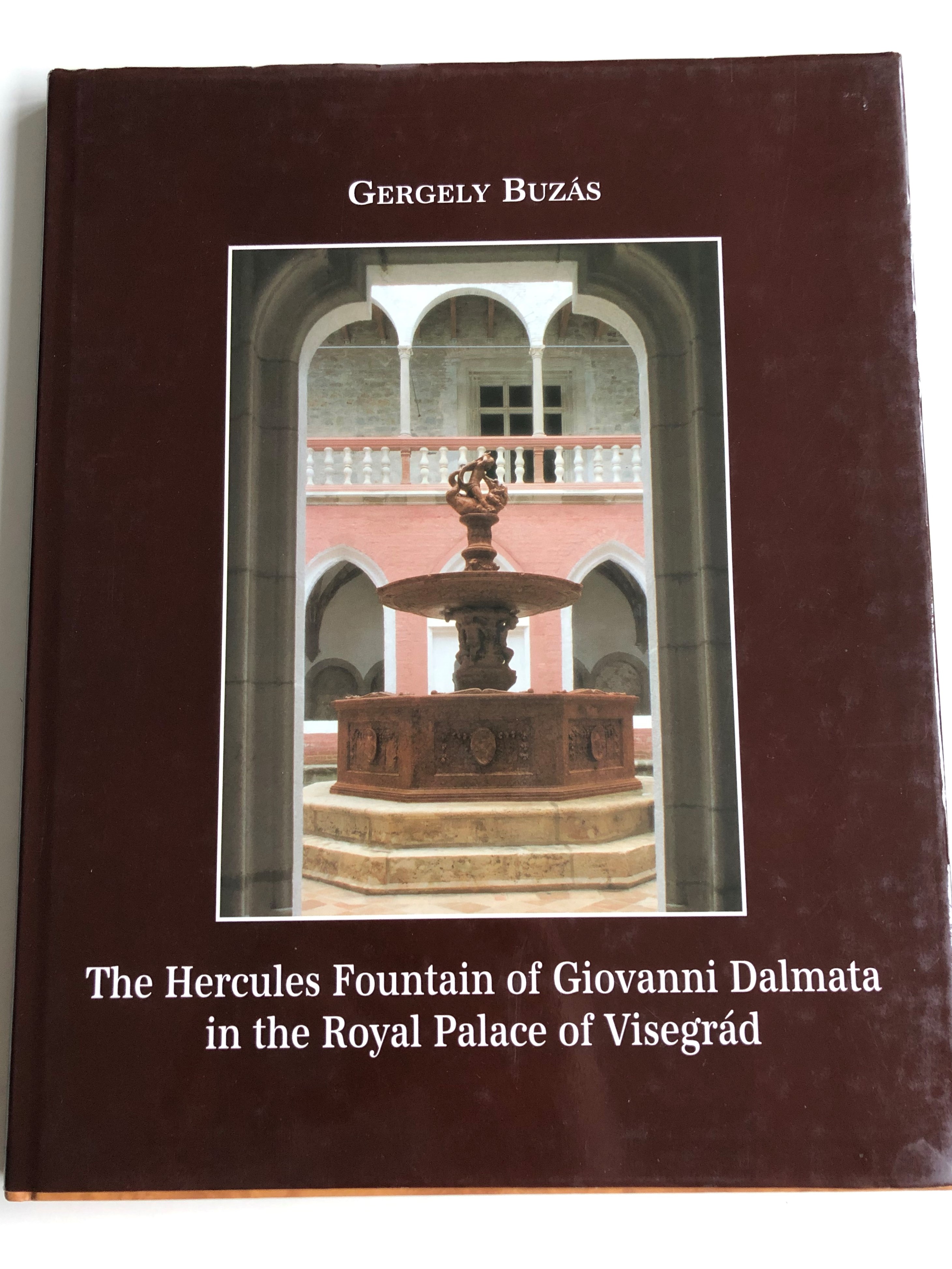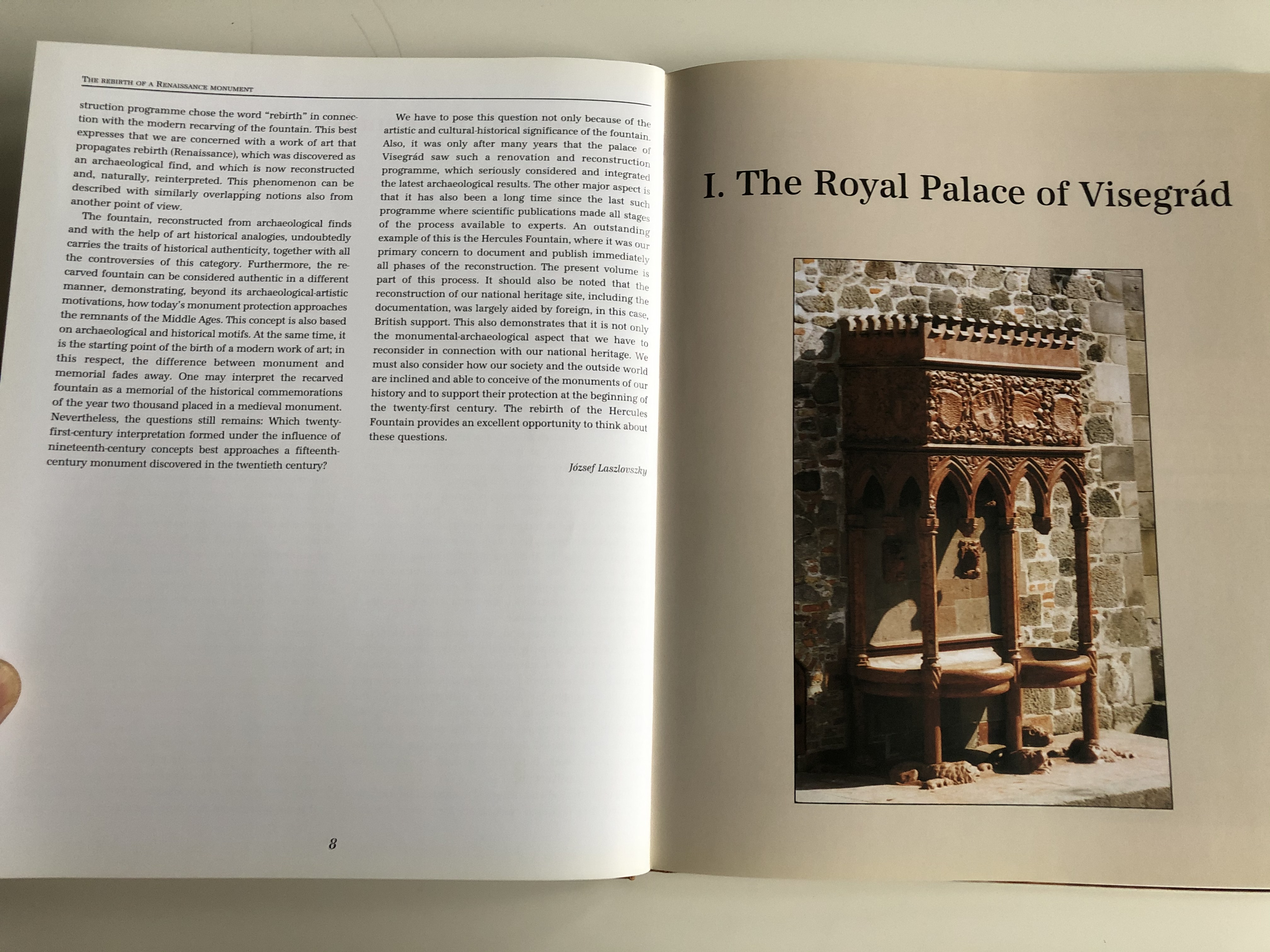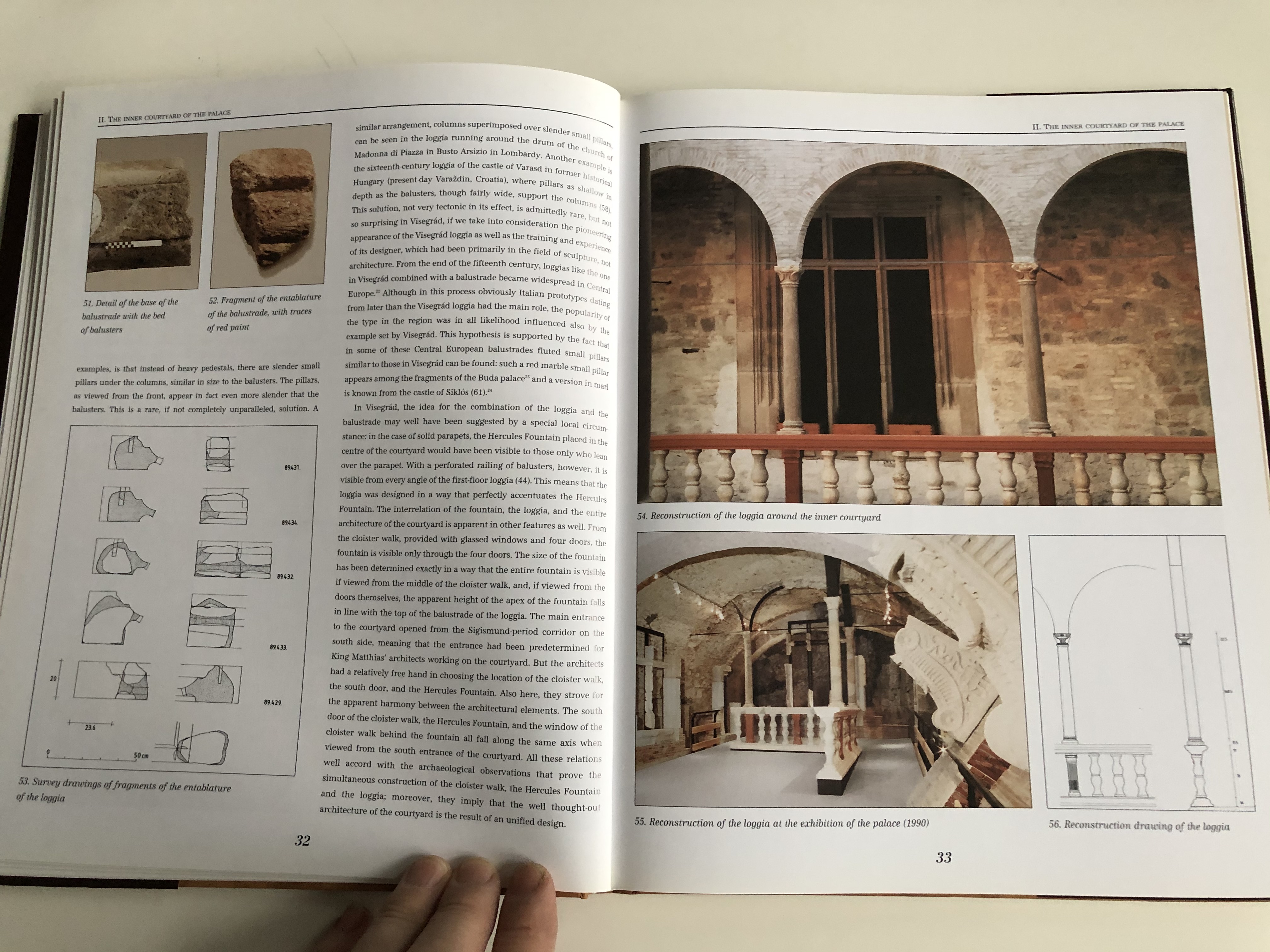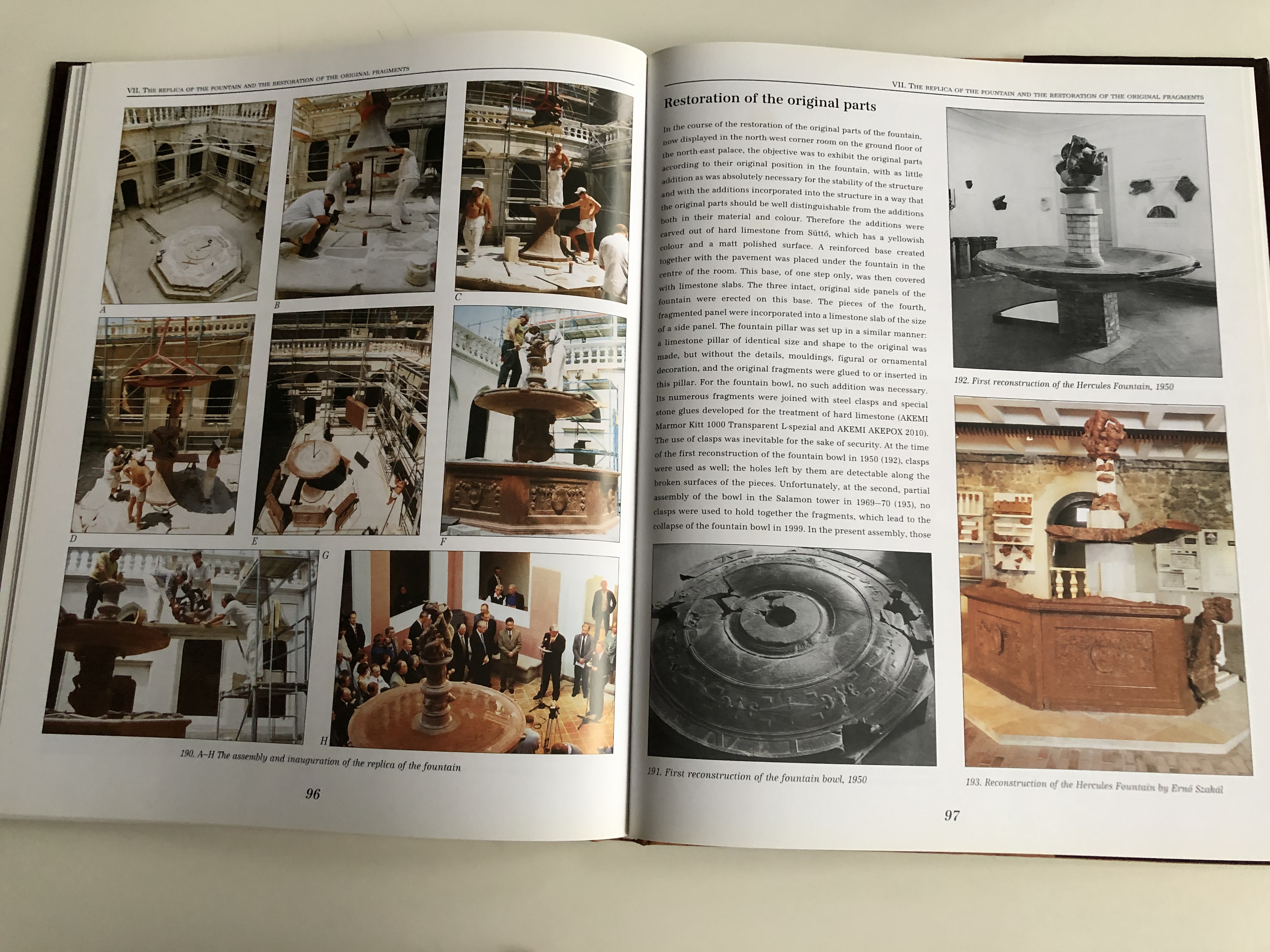Description
The Hercules Fountain of Giovanni Dalmata in the Royal Palace of Visegrád by Gergely Buzás / TKM Association & King Matthias Museum 2001 / Hardcover / English edition of Giovanni Dalmata Herkules-kútja a visegrádi királyi palotában
Hardcover 2001
ISBN-10: 9635545363
ISBN: 9789635545360 / 978-9635545360
PAGES: 107
PUBLISHER: TKM Egyesület
LANGUAGE: English / Angol
Translated into English by Dóra Sallay
English Description:
In 1944, archacologists i na garden Visegrad brought to light extraordinary finds from under a layer of earth seven meters deep. They were the remains of
the roval palace. destroyed during Turkish times and known by the twentieth century only from medieval descriptions. Through these excavalions, the palace became tangible reality.
Now, after sixty years of research by several generations of scholars, the wall remains of the inner courtyard of the palace and the several thousand stone fragments have been reunited again to form a comprehensible ensemble.
The first royal house on this site was built by King Charles I of Hungary in 14th century. In 15th century Matthias Corvinus had the palace complex reconstructed in late Gothic style. After the Ottoman Turks’ siege in 1544, the palace fell into ruins. Its excavation began in 1934 and continues today.
In the court of the palace there is a reconstruction of a fountain created by Giovanni Dalmata. The Fountain of Hercules is a piece of the Quattrocento and one of the earliest examples of Renaissance art in Hungary.
Visegrád (Hungarian pronunciation: [ˈviʃɛɡraːd]) is a small castle town in Pest County, Hungary. It is north of Budapest on the right bank of the Danube in the Danube Bend. It had a population of 1,864 in 2010. Visegrád is famous for the remains of the Early Renaissance summer palace of King Matthias Corvinus of Hungary and the medieval citadel.
He was born in Vinišće, a Dalmatian village (now a part of Marina) in Venetian Dalmatia around 1440. His father was Stjepan Duknović, a stonemason in Trogir. He came to Rome between 1460 and 1465 to work for Pope Paul II on the Palazzo di Venezia. Other works in and around Rome include: the Tempietto of S. Giacomo in Vicovaro (near Tivoli), the tomb monuments of Pope Paul II in St. Peter's (now dismantled), the tomb of Cardinal Bartolomeo della Rovere in San Clemente, the tomb of Cardinal Bernardo Eroli (now in the Grotte Vaticane).
Around 1488–1490, Giovanni went to the Court of King Matthias Corvinus in Buda, where he stayed for a few years, mastering a number of works which are unfortunately all either completely destroyed or badly damaged (e.g. the Fountain of Hercules in Visegrád).
After his stay in Hungary, Giovanni Dalmata returned to Trogir (Traù in Italian) where he left a number of works, most important among those is the statue of St. John the Evangelist in the Orsini Chapel in Trogir Cathedral. He is also the creator of the sculpture of St. Magdalene in the Franciscan monastery of St. Anthony on the nearby Čiovo island and worked with Nicolò Fiorentino and Andrea Alessi on the Renaissance Cippico Palace in Trogir.
Giovanni Dalmata (Croatian: Ivan Duknović; c. 1440 – c. 1514), born Ioannes Stephani Duknovich de Tragurio, also known as Giovanni Duknovich di Traù in Italy and Ivan Stjepanov Duknović in Croatia, was a sculptor from Trogir, Dalmatia, who was mainly active in Rome, Hungary and his native country during the European Renaissance. Dalmata was, with Mino da Fiesole and Andrea Bregno, one of the leading sculptors in Rome in the second half of the 15th century.
Hungarian Summary:
Visegrád (németül: Plintenburg, szlovákul: Vyšehrad, szláv eredetű szó, jelentése: magas vár, fellegvár) város a Közép-Magyarország régióban, Pest megyében, a Szentendrei járásban, a budapesti agglomerációban. Magyarország egyik legkisebb városa, népszerű kirándulóhely, kikötőváros. Vára, mely egy alsó várból és egy citadellából áll, kiemelkedő jelentőségű: a középkorban a magyar királyok egyik legfontosabb rezidenciája állt itt.
Giovanni Dalmata (eredetileg Ivan Duknović, ismert még Giovanni Duknovich di Traù és Ioannes Stephani Duknovich de Tragurio néven is, Vinišće, 1440 körül – 1514 körül), a dalmáciai Trogirból származó szobrász, aki főleg Rómában, Dalmáciában és Magyarországon dolgozott. Mino da Fiesole és Andrea Bregno társaságában a 15. század második felének egyik meghatározó szobrásza volt Rómában. 1460-65 körül érkezett a városba, hogy II. Pál pápa számára dolgozzon a Palazzo di Venezián. Egyéb római vagy Róma környéki munkái közé tartozik a Tempietto San Giacomo Vincovaróban, II. Pál pápa síremléke a Szent Péter-bazilikában, Bartolomeo della Rovere bíboros síremléke a Szent Kelemen-bazilikában, Bernardi Eroli bíboros síremléke.
Az 1480-as években Mátyás király udvarában dolgozott Budán. Munkái nagy része elpusztult vagy igen megsérült. Legismertebb magyarországi munkája visegrádi királyi palotában lévő Herkules-kút.
Mátyás halála után visszatért Trogirba, ottani munkái közé tartozik egy Keresztelő Szent János-szobor a Szent Lőrinc-katedrális Orsini-kápolnájában, egy Magdolna-szobor a Szent Antal ferences kolostorban, ami Čiovo szigetén található, és együtt dolgozott a Čipiko palotán Niccolò Fiorentinóval és Andrea Alessivel. 1503 körül ismét Rómában élt, majd 1509-ben Anconában dolgozott. 1514-ben Trogir városában elhunytként említik.






























































